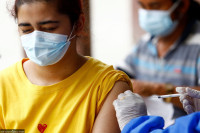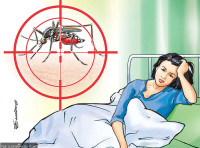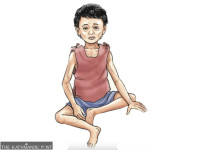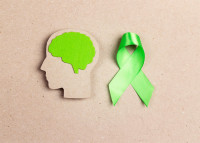Thu, Dec 18, 2025
Health
On orthopaedics
Self-care and wellbeing responsiveness is essential in establishing long term health prospects
bookmark
Parash Adhikari
Published at : December 27, 2018
Updated at : December 27, 2018 09:42
The short term solution for any pain or ailment in Nepal has been to pop any over-the-counter painkillers. It sure does relieve any kind of pain for a certain time but it also poses a danger of delay in diagnosis. Even with such risk, people neglect their symptoms for multiple number of reasons—they do not have time to make a hospital appointment, they do not prefer to endure long waiting hours followed by short consulting time to the doctor.
This is also practiced for problems related to orthopaedics, a branch of medicine which deals with musculoskeletal system. This field of medicine is truly dependent on harmony between patient and their doctor and compliance between them. Many of the cases have become more complicated and difficult to cure due to the negligence towards their treatment. In fact, the negligence starts even before the symptoms become persistent.
The negligence may be fueled as people find the investigations more expensive and less productive. They also seem to neglect it if it is not severe enough to restrict their daily activities, many people only opt for doctor visits when their condition has gravely worsened. With our socio-economic environment, some people even try traditional healers before taking professional help.
There are diseases which need to be followed for a long time as their course can remain silent. Just mere relief from pain and deformity cannot guarantee full treatment, this is basically what the people need to understand and realise for a healthy and productive outcome between doctor and patient. This problem is more evident with the rampant use of antibiotics from the medical shops which at many instances are unnecessary. This has led to antibiotic resistance—a global threat to humankind.
Orthopaedic problems in humans can be traced to ancient times. The oldest medical document was 30th century BC Egyptian wall paintings of Ipuy’s tomb. However, the scenario has changed as well as the problems. There are various streams of orthopaedics that are concentrated in the diseases that have now emerged due to present lifestyle of the population.
One of the most prevalent diseases is ‘office orthopaedics’, which deals with the posture related problems of bones and soft tissues after long office and clerk works. Then there is ‘sports orthopaedics’ that deals with sports injuries. The other forms are hand microsurgeries and orthopaedics traumatology for management of human mishaps during natural or manmade accidents.
The office orthopaedics mainly deals with the misalignment of body posture or specific part of the body used for a long time that exerts pain in the affected site, usually the back (lumbosacral region), shoulder pain, inflammation of tendons of hand. These are the kind of pain that can get relieved on rest but appears when being on same difficult position.
Likewise, the most common injuries dealt under sports orthopaedics are injuries to knee (simple bone contusion, ligament tear, patella fracture or joint dislocation), ankle injuries (ligament injuries, joint dislocation), foot fracture, shoulder dislocation (volleyball or basketball sports injury). Other common infective pathologies include osteomyelitis, tuberculosis of bone (usually spine), septic arthritis.
The treatment of these injuries might involve slight immobilisation to operative procedures. Degenerative diseases of musculoskeletal system like osteoarthritis are also common in old age patients.
Apart from these, a wide array of diseases, from ankle sprain to neoplasms are dealt under orthopaedics. Some have modifiable factors while some don’t. One of the most common issues in orthopaedics is injury following Road Traffic Accident (RTA) or fall injury. These present with a spectrum of injury ranging from simple superficial skin injury, bruises, closed
fractures, open fractures, head injuries, neurovascular insult (injury to nerves and blood vessels) which may or may not be reversible, which may even lead to death sometimes.
The treatment, its outcome and prognosis depend on the type of injury. The immediate first aid management at injury site, the time between injury and hospital care, and treatment options available and the post treatment care and rehabilitation are the major factors contributing to the treatment and its subsquent healing.
The road traffic accident is due to mis-interaction between three factors of epidemiological triad—agent (vehicle), host (human) and environment (road, infrastructure). This can be prevented by conscious correction by these three factors. The agent factor like poor vehicle condition can be improved by timely maintenance of vehicles. The human factors like reckless driving can be avoided by raising awareness as well as regular and strict monitoring by the police. The environment factors like proper road condition and low visibility factors should be carefully addressed by the policymakers.
However, if the injury has occurred then small steps of management at the injury site can make a significant impact on the course of recovery. Some of the steps that help decrease the impact of the injury can be immediate rescue from the injury site to a safe zone, immediately calling for help, assessing any bleeding area, stopping blood loss, immobilization of the injured part and cardiopulmonary resuscitation. These can, in fact, turn out to be lifesaving.
Additionally, physiotherapy has been playing a vital role in post therapeutic rehabilitation of orthopaedic patients. Physiotherapy is basically set of special exercises and maneuvers which need to be properly followed and done for certain time after any treatment which aid for faster recovery and minimization of complications and ultimately decreasing morbidity and mortality of patients post treatment. It may seem simple, but this invariably reduces complications. Physiotherapy after fracture management reduces incidence of decreased range of movement, any contractures and early resuming of activities. But people fail to follow the regular physiotherapy course after they themselves declare ‘fit’ and seldom return to hospitals. Ignorance in general hygiene and care of wound proper is an evergreen issue almost talked about every time.
In a nutshell, the most important thing for any remedy or prevention is the knowledge of self-care. The day-to-day activities should be tailored in such a way that suits the body’s natural physiology. Brief period of physical exercise, yoga and meditation will not only break the chain of sedentary life style but also revitalise the body and mind. Routine health check up with proper compliance to doctor’s advice even after treatment is very essential in establishing long term health prospects.
Needless to say, awareness and implementation of principles of general hygiene and sanitation is often overlooked but is equally important for the holistic approach to health.
Adhikari is student of medicine at Kathmandu University School of Medical Sciences.
Most Read from Health
Nepali AI tool detects 14 chest ailments through a single X-ray
Air pollution spikes in Kathmandu Valley. Experts call for coordinated action
Lumbini tops provinces in maternal deaths. Referral gaps blamed
Dengue cases down, but virus widespread across Nepal
Nepal ‘cannot end’ malaria until India does so
Editor's Picks
E-PAPER | December 18, 2025
×




 19.12°C Kathmandu
19.12°C Kathmandu














